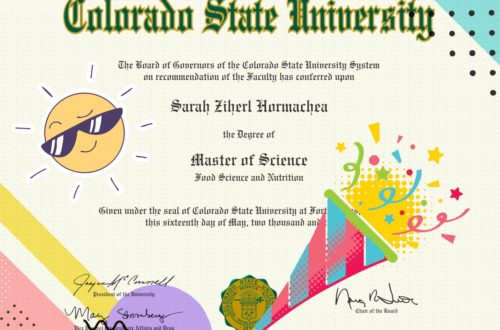
Research: Building the Conclusion
The scientific research process has come together quite smoothly. The objectives, sources, methods and even results have taken a logical order. I formulated some observational questions, devised a plan to find the answers and reported on what I found.
Surprisingly, the biggest challenge has been writing the conclusion. Personally, I think my research is important. I think it’s interesting. With 5 months in the making, it’s thoughtfully prepared. But my results are clearly not winning a Nobel prize; so why should anyone care?
In general, conclusions are difficult to write. It takes seasoned skill to translate niche-topic results to relevant practices for a broad audience. There is a tendency to oversimplify out of ease and dramatic effect. It is equally challenging to write a conclusion that contributes to the body of knowledge on a topic. What unique perspective can we present that our peers in the field have yet to reveal? If my conclusion accomplished both it would be a Christmas miracle.
In my quest to write the perfect conclusion, I went to the place where everyone goes to start their modern day- 21st century quests – google. Trending opinion was to think of the conclusion as a ‘bridge to reality.’
“Just as your introduction acts as a bridge that transports your readers from their own lives into the “place” of your analysis, your conclusion can provide a bridge to help your readers make the transition back to their daily lives.”
Another site referenced the conclusion as the writer’s greatest gift.
“Your conclusion should make your readers glad they read your paper. Your conclusion … helps them see things differently or appreciate your topic. It can suggest broader implications that will not only interest your reader, but also enrich your reader’s life in some way. It is your gift to the reader.”
As if I were not already concerned with writing a comprehensive conclusion, these descriptions raised the bar unattainably high.
What I actually found most helpful, and slightly amusing, were examples of ineffective conclusions. The following are considered the four most common.
The “That’s My Story and I’m Sticking to It” Conclusion. This conclusion just restates the thesis and is usually painfully short. It doesn’t push the ideas forward. People write this kind of conclusion when they can’t think of anything else to say.
The “Sherlock Holmes” Conclusion. Sometimes writers will state the thesis for the very first time in the conclusion. It is tempting to use this strategy to keep from revealing everything too early in the paper. It may sound more dramatic to keep the reader in the dark until the end and then “wow” him with the main idea, as in a Sherlock Holmes mystery.
The “America the Beautiful”/”I Am Woman”/”We Shall Overcome” Conclusion. This kind of conclusion usually draws on emotion to make its appeal, but while this emotion and even sentimentality may be very heartfelt, it is usually out of character with the rest of an analytical paper.
The “Grab Bag” Conclusion. This kind of conclusion includes extra information that the writer found or thought of but couldn’t integrate into the main paper. It may be difficult to leave out details that were discovered after hours of research and thought, but adding random facts and bits of evidence at the end of an otherwise-well-organized essay can just create confusion.
Is it horrible to admit I can identify research papers from the past that exemplify these conclusions to a T?
Despite the challenge, I have confidence in the strength of my research conclusion. It is more encompassing than a summary of my experiment. It is more meaningful than a disclosure of whether I proved or disproved my hypothesis. While it may not be the “greatest gift” my readers are anticipating, my research conclusion is an honest, science-based reflection of the trends and implications of my findings.
Source: The Writing Center, University of North Carolina at Chapel Hill. (2014). Conclusions. Retrieved from https://writingcenter.unc.edu/handouts/conclusions/




